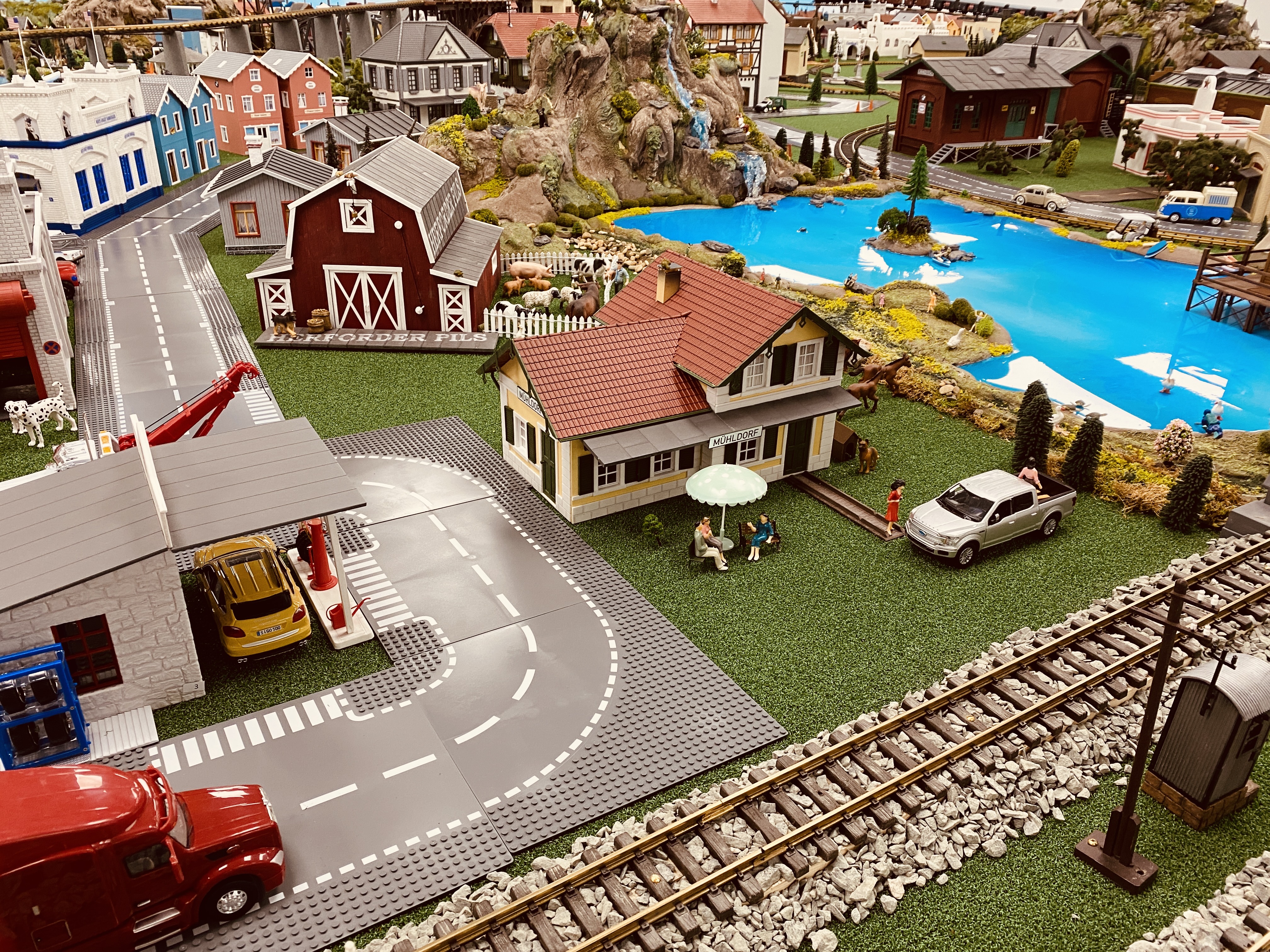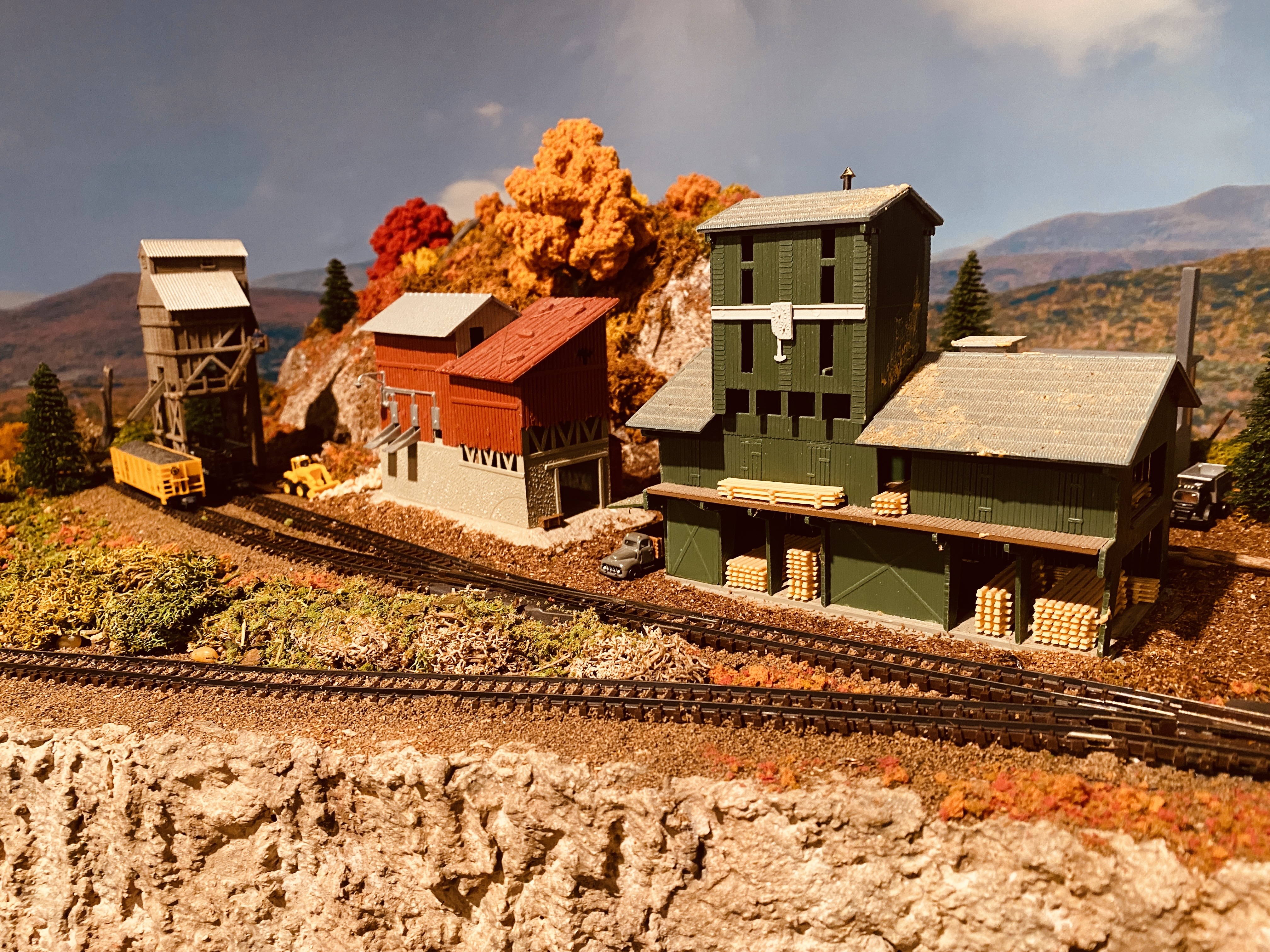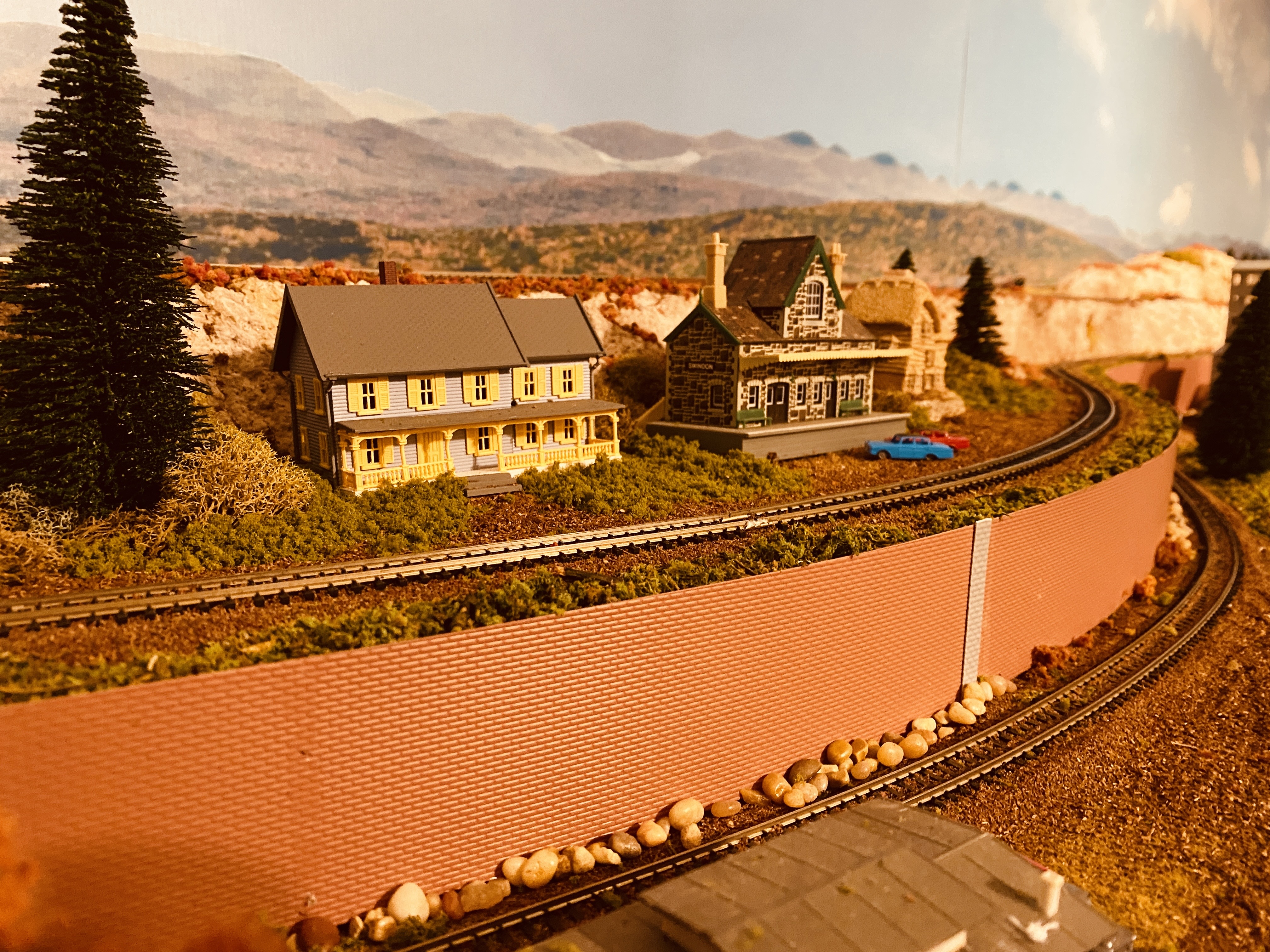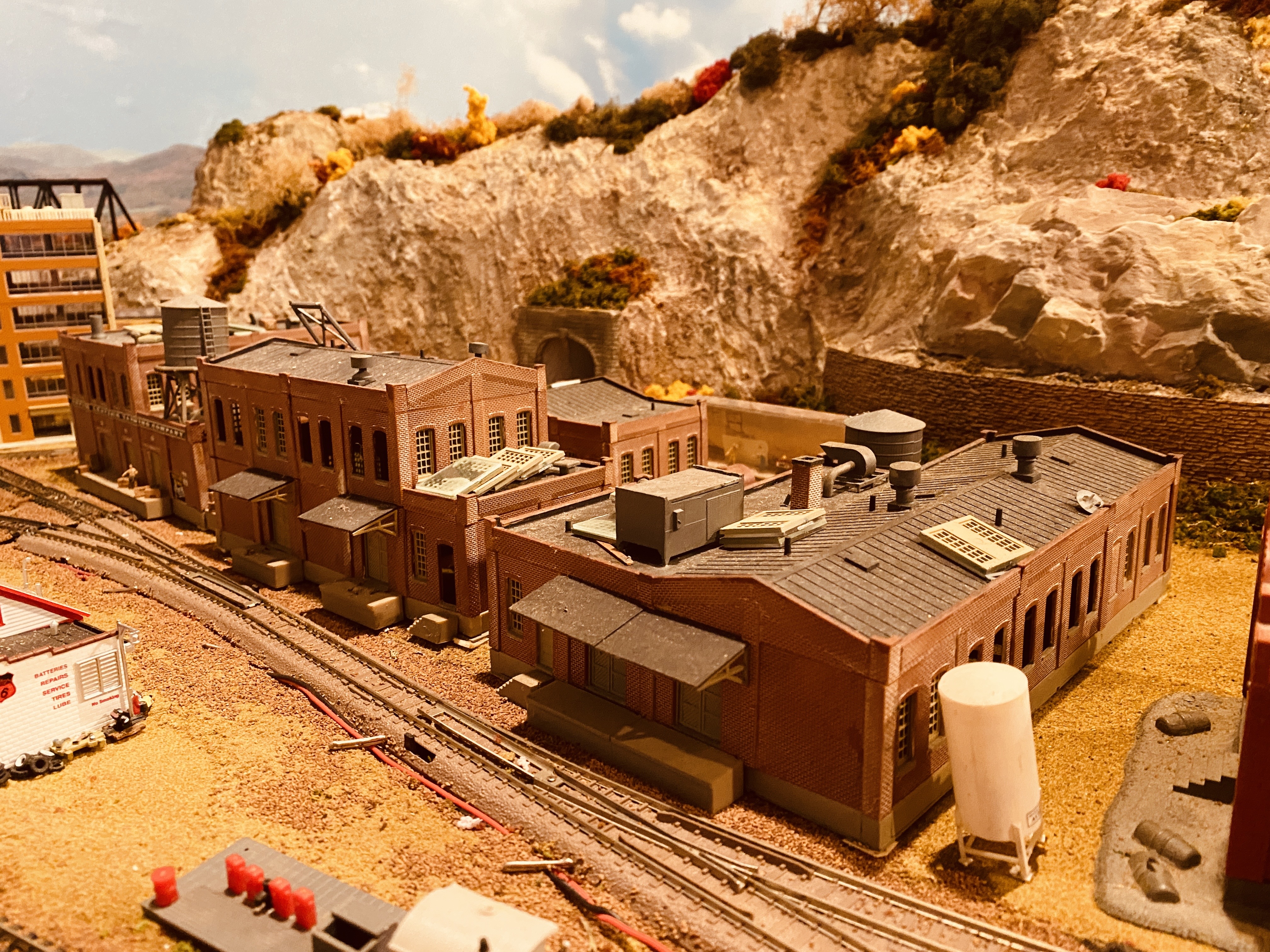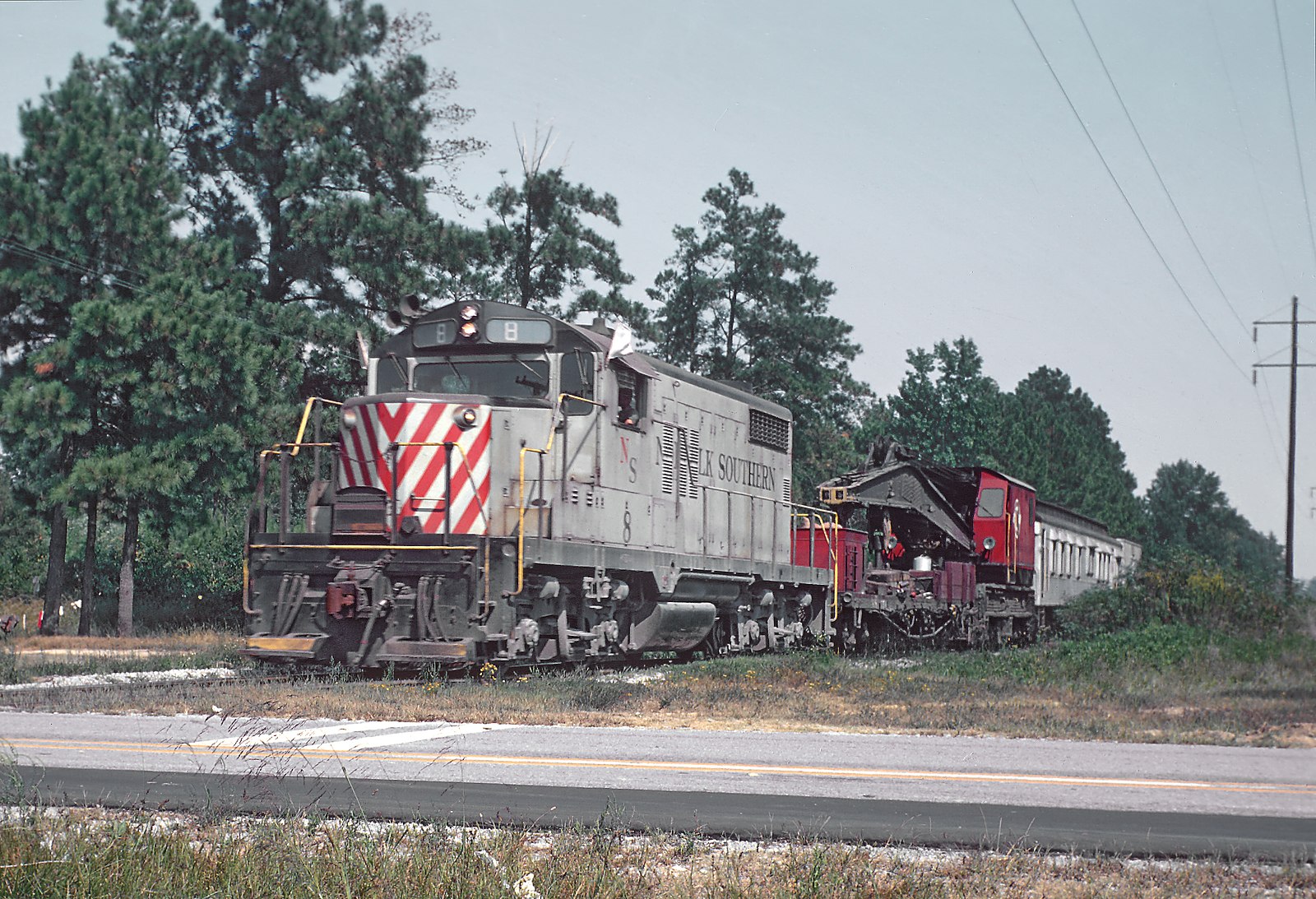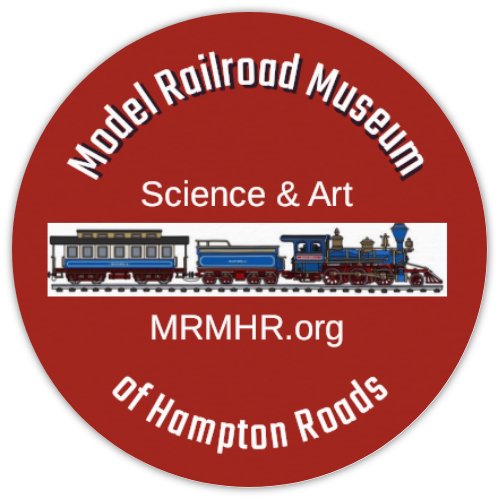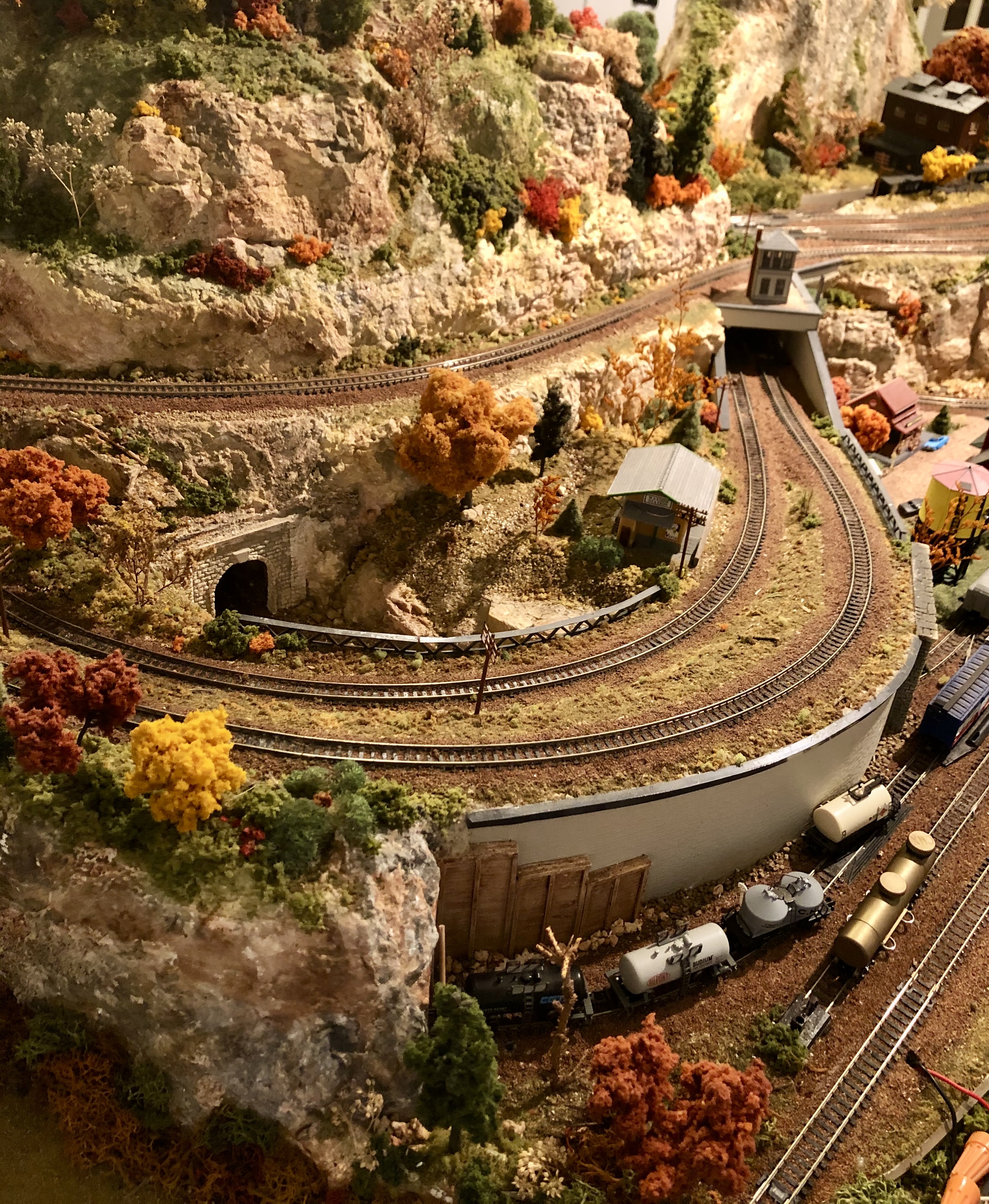Making Tracks
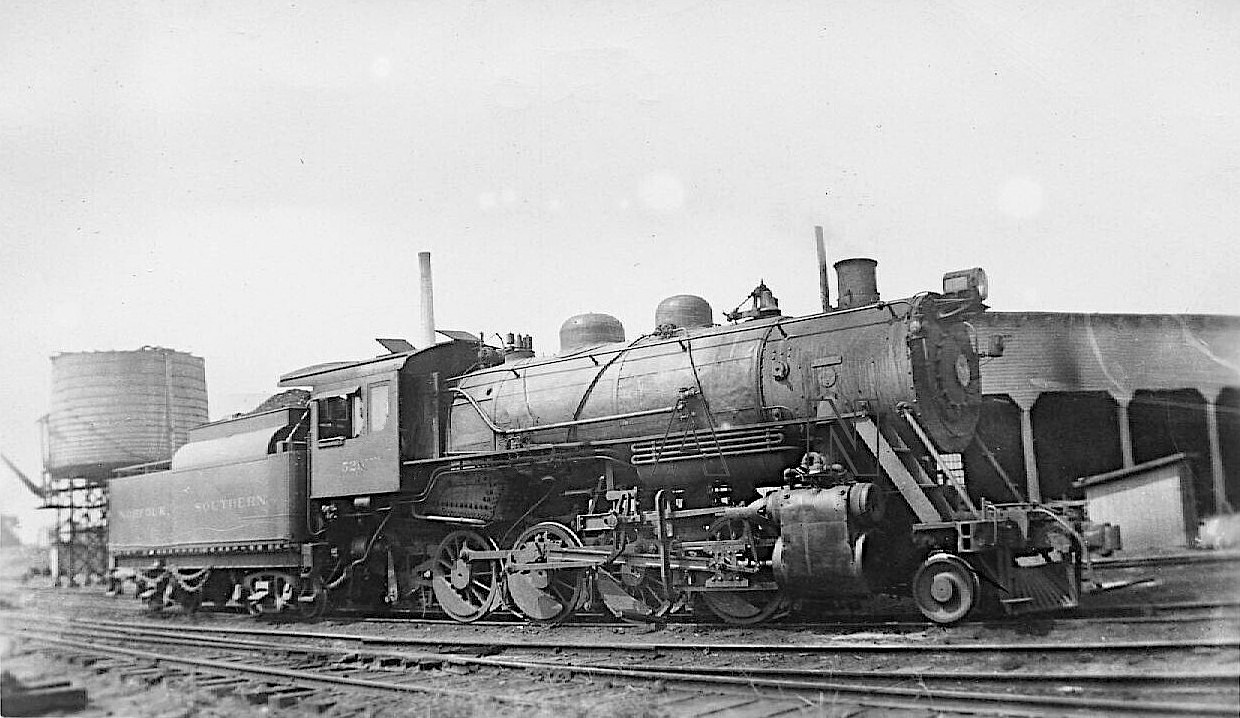 1940s NS No.538
1940s NS No.538August 2023

Welcome to Making Tracks, the official newsletter of the Model Railroad Museum of Hampton Roads. Thank you for subscribing. This will provide you with the newest updates, offers, discounts, lots of information about model railroading, railroad history, stories, and educational articles.
President's Column
Museum President’s Monthly Article:
Source: https://www.wikipedia.org/
Importance of Admission, Membership, Donation, and Advertisement cash flow?
Number of Museums by Locale and Focus with Hampton Roads:
Atlantic Wildfowl Heritage Museum
The Virginia Beach Surf and Rescue Museum
Princess Anne County Training School/ Union Kempsville High School Museum
The Railroad Museum of Virginia (City Property)
Children’s Museum of Virginia (City Property)
Portsmouth Art & Cultural Center
Portsmouth Naval Shipyard Museum
Portsmouth Colored Community Library Museum
Charles Taylor Visual Arts Center
Lee Hall Train Station and Museum (City Property)
U.S. Army Transportation Museum
Seaboard Station Railroad Museum (City Property)
Suffolk Fire Department Museum
The Great Bridge Battle Museum
Model Railroad Museums across the nation:
San Diego Model Railroad Museum (City Property)
Mega Model Train Gallery – Morris Museum
https://morrismuseum.org/model-trains-railroad
Colorado Model Railroad Museum
Mississippi Coast Model Railroad Museum
G Scale, LEGO, and 71/2 Scale (Guest-Can-Ride) Layouts
Twin City Model Railroad Museum
Rensselaer Model Railroad Society – RPI Union
https://www.union.rpi.edu/club-directory/rensselaer-model-railroad-society
George L. Carter Railroad Museum – East Tennessee State University
Western Pennsylvania Model Railroad Museum
https://randallmuseum.org/project/model-railroad
Apple Valley Model Railroad Museum
https://www.visitnc.com/listing/6Qwk/apple-valley-model-railroad-museum
National Toy Train Museum (County Property)
G, S, HO, and LEGO on the same layout
Treasure Coast Model Railroad Club
Rockledge Model Railroad Museum
https://www.rockledgemrm.org/~rockledgemrm/wordpress
Pasadena Model Railroad Museum
Suffolk Station Railroad Museum (City Property)
https://www.suffolktrainstation.com
The Children’s Museum of Virginia (City Property)
https://childrensmuseumvirginia.com
https://miniatureworldoftrains.com
PROPOSED Model Railroad Museum of Hampton Roads
· The most popular model railroad scale to display is HO scale found at 11 museums.
· The next most model railroad on display is O scale at 9 museums.
· G scale and LEGO were displayed at 3 museums.
· S and 7 1/2 scales were available at 2 museums.
· No museum displayed Z scale or Kids Run Trains in O Scale.
· City property was donated to support 3 museums while one museum is on county property.
· Preferably a central location in HR
· Avoid heavy residential areas.
· 68,000 square feet or more to allow room to grow and to prevent having to move later.
Recommendations for Initiation and Implementation:
· Proceed with Traveling Exhibit.
Traveling Exhibit: The Traveling Exhibit itself will increase awareness wherever it goes.
Birth of Virginia Beach
By Warren Leister
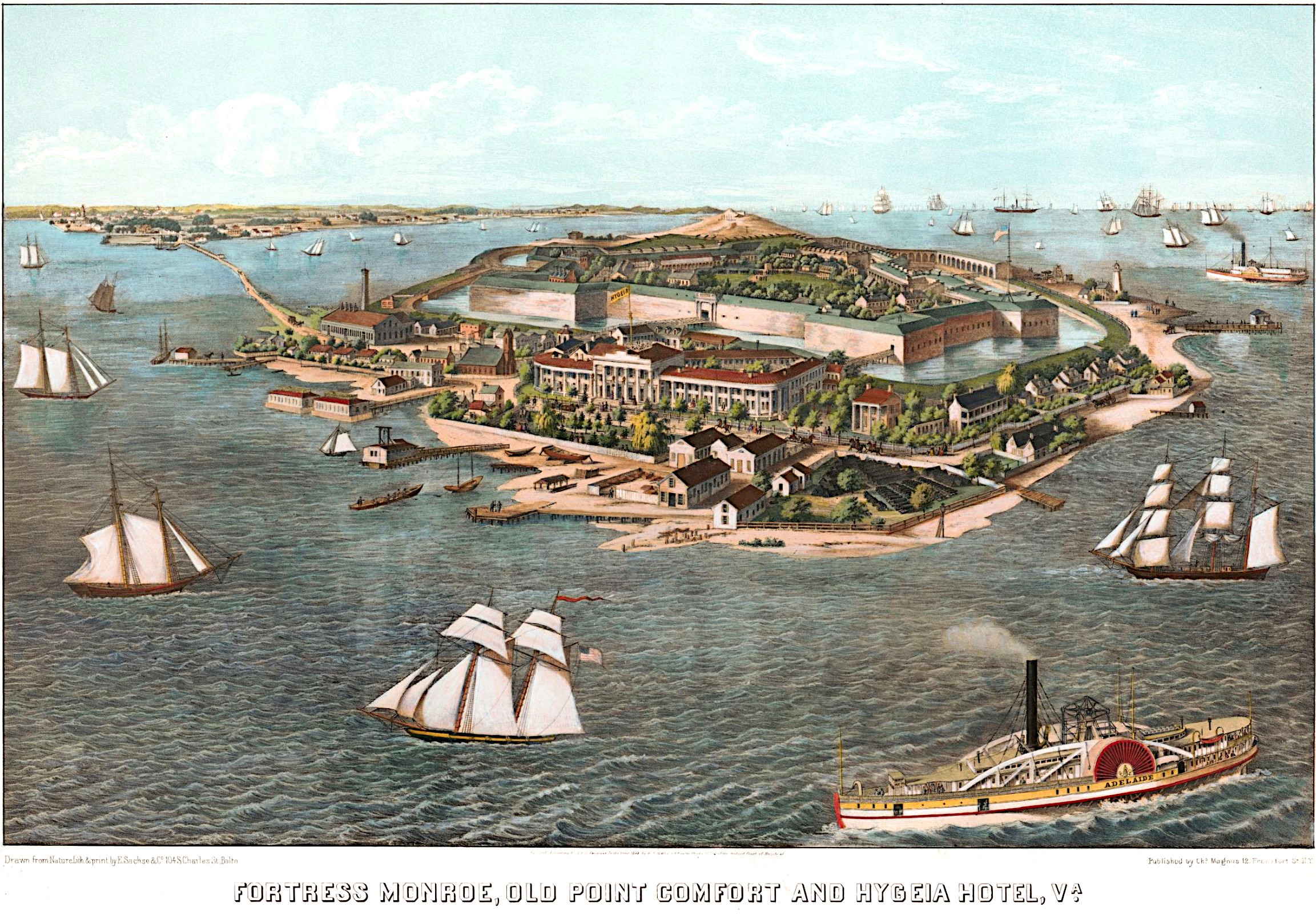
Birth of Virginia Beach Part 1: A Goddess of Southern Hospitality overlooking Hampton Roads
In an edition of the Virginia Beach Beacon, a subsidiary publication of the Norfolk Virginian-Pilot, published in 1983 an article acclaimed Marshall Parks Jr. (Marshall Jr.) as the founder of Virginia Beach. This pertained to Marshall Jr. having been the President of the “Norfolk and Virginia Beach Railroad and Improvement Company” which was incorporated in 1882 with the railroad being constructed the next year, long before Virginia Beach was incorporated as a town in 1906. Not just a railroad, the company bought a group of farms at the oceanfront and was a major real estate development firm as well. By this time, Marshall Jr. had long been an investor in real estate in what would become Virginia Beach and proprietor of a large hotel there called “The Hollies,” modeled after a previous Hygeia Hotel that he and his father Marshall Parks Sr. (Marshall Sr.) at Old Point Comfort.
The Hygeia Hotel, with Hygeia being the Greek goddess of health and cleanliness, was built in 1820 at Old Point Comfort with Marshall Jr. being born there later that year on November 8, 1820. It was managed originally by Marshall Parks Sr. for many years and then later by the son Marshall Jr. and this was not the only time that the father and son worked together with the son later following in the father’s footsteps. Many famous and accomplished people stayed at the Hygeia over the years as it was quite well known and popular. Two people known to have stayed there as example were President Andrew Jackson, while he was President and Edgar Allen Poe, the famous poet and author not long before he passed away.
An ad for the hotel in 1822 declared:
“Here lov’d Hygeia holds her blissful seat,
And smiles on all who seek her blessed retreat.”
In another ad in 1827, Marshall Parks Sr. states that the Hotel Hygeia has the following amenities: an extensive collection of apartments of every description, a private dwelling, ice-house, stables, and bath houses for sea and warm bathing. The hotel was easily accessible via steam boats going to and from Norfolk, Hampton, James River destinations, Washington D. C., Baltimore, and Philadelphia. It was considered a quite healthy and comfortable destination in summer, in part due to a pleasant sea breeze, and thus became well established as quite a popular and fashionable resort.
A few years later on March 8, 1832, the Portsmouth and Roanoke railroad was incorporated as the first Hampton Roads railroad. This railroad was envisioned to connect the port of Portsmouth, Va. in Norfolk county Virginia to some point on the Roanoke River along with a related regional canal system in northeast North Carolina. The goal was to connect that area with greater Hampton Roads and it’s water borne access to major rivers, the Chesapeake Bay, and the Atlantic Ocean. This project was also in reaction by the people and industries of Hampton Roads to a competing railroad the Petersburg Railroad Company, incorporated in 1830, which was by 1832 under construction from Petersburg, Va. to Weldon, Nc. on the Roanoke river and it opened the next year in 1833. Both railroads were sponsored in part by the commonwealth of Virginia. The Portsmouth and Roanoke was completed in 1835 when it also become known as the Seaboard and Roanoke Railroad until a number of years later when the Portsmouth and Roanoke name gradually disappeared.
During the 1830’s, Marshall Sr. was a Director of the Dismal Swamp Canal Company and Marshall Jr., as a teenager, was also working there along side his father. They both were also involved in saw mill and other lumbering activities in that same time frame until 1840 when Marshall Sr. died with Marshall Jr. being only 19 years of age. Marshall Jr. then took on more mature role than his tender years and continued to be involved in those same activities in some ways filling in and replacing his father.
Marshall Jr. always took an active interest in Norfolk, the city of his later adoption as an adult, and transportation issues in general. He had become quite involved in steam boats working his way up to being an able Captain. During the time when the freight handled by the new Seaboard and Roanoke railroad was first being brought to Portsmouth after the completion of the railroad, Marshall Jr. was sent North to secure a vessel by which the freight stored in the railroad cars could be brought over to Norfolk from Portsmouth. This was accomplished, but this was so early on in the evolution of railroading that it soon developed that there was a better method by employing a barge to carry the railroad cars on rails towed by a tug boat, so the original vessel was given up. This tug and barge method established between Portsmouth and Norfolk of moving freight cars over water continued locally with the Eastern Shore Railroad from Little Creek, Va. to Cape Charles, Va. until that railroad's ultimate demise just a very few years ago.
Back at the Hygeia Hotel, Edgar Allen Poe read poetry on the veranda there on Sept. 9, 1849 only about a month before he died in Baltimore, see the illustration.
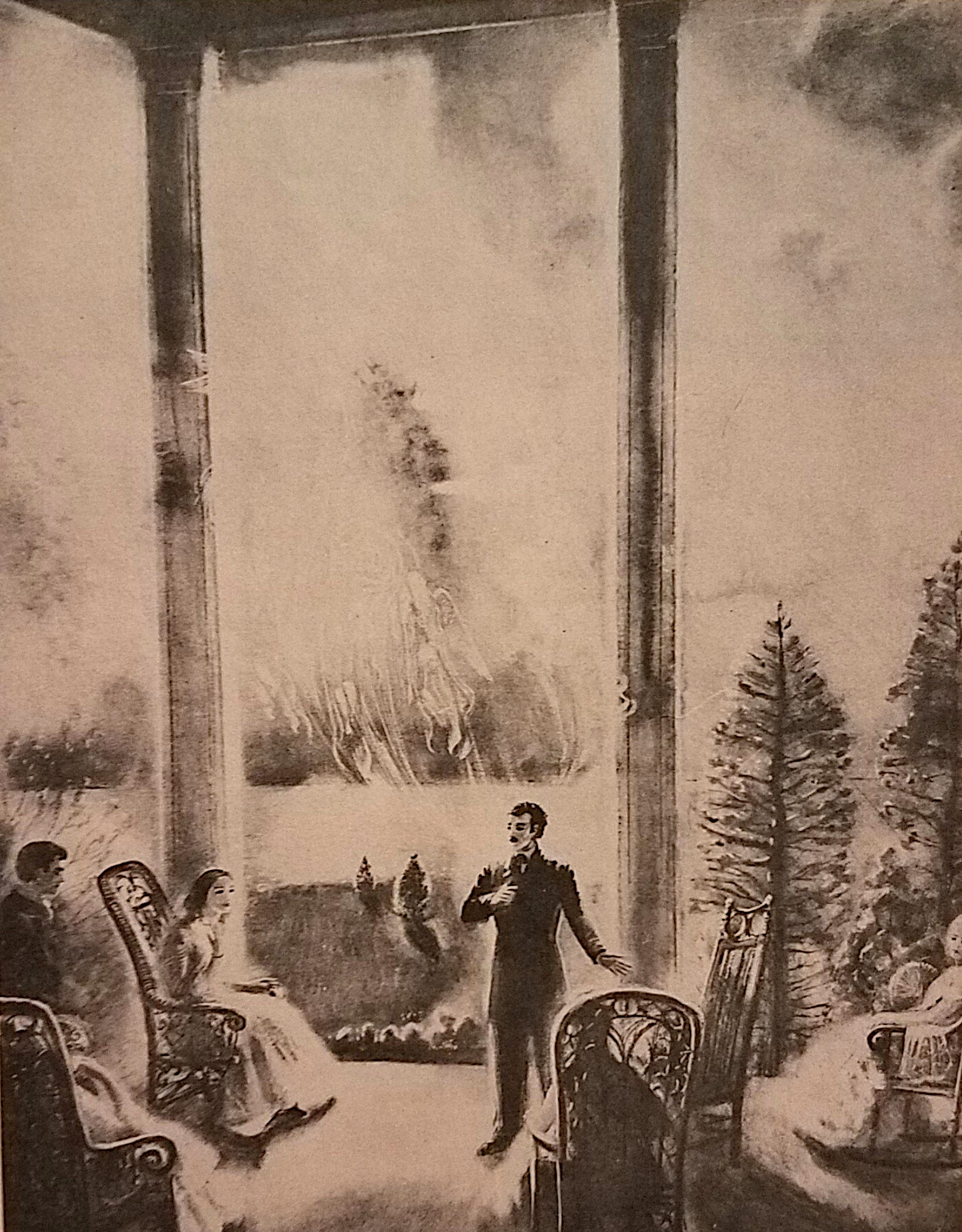
The following letter is from the Baltimore Sun published July 22, 1851, author identified only by an upper case “M”, titled “Letter from Old Point” with this author’s notes in {brackets and italicized}
“Old Point Comfort, July 18, 1851 Delightful Trip – Large Company – The Hotel {Hygeia} and its Management – The Bathing – Splendid Fortress {Ft. Monroe}, and more.”
“Gentlemen: - A very delightful trip of twelve hours in the Herald {a ship of the Baltimore Steam Packet Company which transited between Baltimore and Norfolk in less than 12 hours,}, Captain Russell, brought us safely to Old Point Comfort last Wednesday morning, where we found a large and fashionable company enjoying the varied amusements of the place. I notice a wonderful improvement in the entire reorganization of the hotel, which has passed, as you know, into new hands, since the summer of 1850. Although the house has hitherto been crowded, the obliging proprietors, and the accomplished manager, Mr. Marshall Parks {Jr born about 30 years earlier in the same hotel as previously noted}, have spared no effort to make every body comfortable; and I hear but few complaints except among the crabbed bachelors, whose quarters are sometimes not as cool as they expected to find immediately ready for them upon arrival. With the rushing wave of visitors that almost overwhelmed the hotel in the earlier part of the season, this was not to be fairly expected. But the manager has always been careful to sustain the right of priority among his guests, and to accommodate them with the best rooms, according to a scheme of promotion as others departed. Those who came to tarry only for a day or two may therefore have gone away dissatisfied when five or six hundred had to be accommodated, and many more were forced to lie on mattresses on the floors. Yet all who have lingered, gradually obtained excellent rooms, and are now forming a large and more agreeable company.”
“Old Point has not failed in the attractions which you have so well appreciated in former years. - The splendid fortress- that military gem of our country – is garrisoned by some choice companies of our gallant troops, whose accomplished officers contribute in no small degree to enhance the amenities of the station. Their morning parade, enlivened by the delicious music of an excellent band attracts a bevy of belles and beaux, beneath the shade of the noble grove of sturdy white oaks, within the walls of the fortress. After this, an hour or two are spent in agreeable intercourse, in the spacious ballroom, or on the broad and shady porches, which are almost constantly refreshed by the sea breeze.
This concludes Birth of Virginia Beach Part 1: “A Goddess of Southern Hospitality overlooking Hampton Roads” the next installment, Part 2, will be published in the MTMHR’s September newsletter.
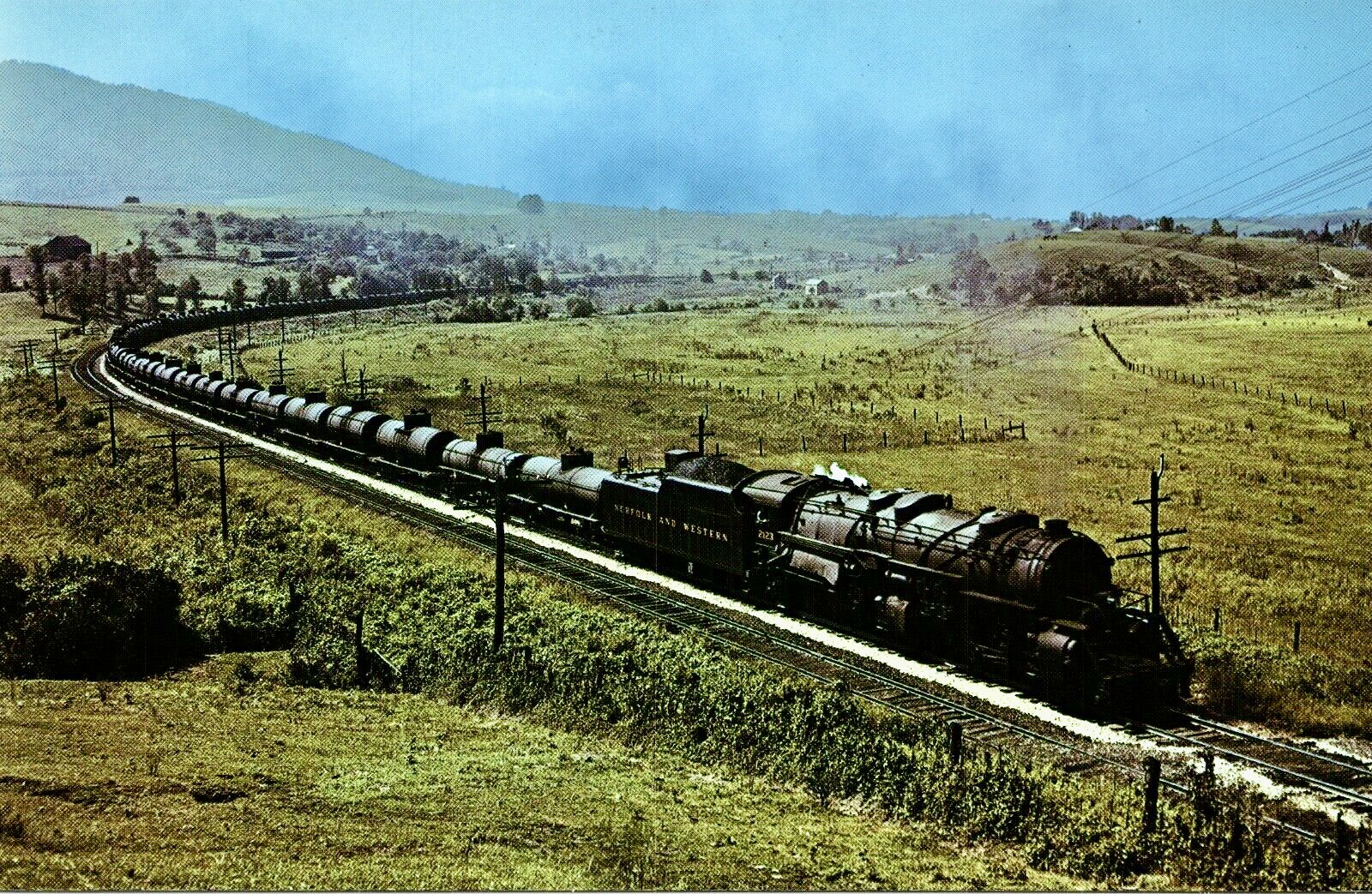 1972 N&W 2-8-8-2 Petroleum Train
1972 N&W 2-8-8-2 Petroleum TrainTraveling Exhibit
We are currently making plans to provide a traveling exhibit as one of our first services to the community. This exhibit will contain displays of various scales (O, HO, N, Z) including modules that can be connected together to form a large layout wherever it is requested. We can set this up at a church, a country club, library, museum, nursing facility, or school - anywhere that has the space and the desire for it. These will be fully functioning model railroads, some of which will be available for operation by visitors.
In addition, we will be offering another service around the Holidays consisting of setting up Christmas train displays, including trains around trees, trains for parties, conventions, or for any other venue.
Prices are very reasonable and negotiable depending on the situation.
Please send an email for more details... secretary@mrmhr.org
Local Railroad History
By Pat Mahoney, Vice President
Most people don't realize the extent of our rich railroad history in this area. Here is a brief summary by one of our Museum founders. [-Ed.]
The Elizabeth City and Norfolk Railroad was established
January 20, 1870, and in 1881 the line opened, running south from Berkley, Virginia, across the Eastern
Branch of the Elizabeth River from Norfolk, via Elizabeth
City to Edenton, North
Carolina. On February 1, 1883, the name was changed to the Norfolk
Southern Railroad ("NSRR"), reflecting the company's ambitions to
build further. It entered receivership for the first time in 1889,
and was purchased April 29 and reorganized May 1891 as the Norfolk and Southern
Railroad. By that time, it had acquired trackage rights over the Norfolk and
Western Railroad over the Elizabeth River into Norfolk. With
the reorganization also came the acquisition of the Albemarle and Pantego Railroad in North Carolina
from the John L. Roper Lumber Company, extending the
line from Mackeys on
the other side of the Albemarle Sound from Edenton south
to Belhaven on
the Pungo River, a branch of the Pamlico River.
On November 1, 1899, the N&S bought the Norfolk, Virginia Beach and Southern Railroad, running east from Norfolk to Virginia Beach on the Atlantic Ocean. An extension parallel to the oceanfront took the line north from Virginia Beach to Cape Henry in 1902, but two years later the N&S bought the competing Chesapeake Transit Company which had a line from Norfolk to Cape Henry via the Lynnhaven Inlet area and hence to Virginia Beach, and abandoned its duplicative trackage between Cape Henry and Virginia Beach. The importance of passenger rail service to the Oceanfront area to Virginia Beach's resort growth in the late 19th and early 20th century was eclipsed only in 1922 by the construction of the paved Virginia Beach Boulevard roadway between the Oceanfront area and Norfolk.
Also in 1902, the N&S acquired the Roanoke Railroad and Lumber Company's Washington and Plymouth Railroad, running from Plymouth, North Carolina, south to Washington, built a line from Mackeys to Plymouth, and began a car ferry operation across the Albemarle Sound between Edenton and Mackeys (replaced by a 5 mile bridge in 1910). The W&P had been built by the lumber company in 1889 to 3 ft (914 mm) narrow gauge, became a common carrier in 1901, and was converted to 4 ft 8+1⁄2 in (1,435 mm) standard gauge by the N&S in 1904.
The Raleigh and Eastern North Carolina Railroad was organized in 1903 and renamed the Raleigh and Pamlico Sound Railroad in 1905. In 1906, it built a line from the end of the N&S at Washington south to Bridgeton, as well as a completely separated line from Raleigh east to Zebulon.
On November 24, 1906, the Norfolk and Southern Railway was formed as a consolidation of the Norfolk and Southern Railroad with the Raleigh and Pamlico Sound Railroad and several other companies:
· Virginia and Carolina Coast Railroad: built 1885 to 1902 from Suffolk, Virginia south to Edenton and from Beckford Junction (on the Suffolk-Edenton section) to Elizabeth City; originally built as the Suffolk and Carolina Railway and renamed in 1906).
· Pamlico, Oriental and Western Railway: built 1906 from New Bern (across the Neuse River from Bridgeton) east to Bayboro, including a bridge over the Neuse River that became part of the main line.
· Atlantic and North Carolina Railroad (leased September 1, 1904): built 1858 from Goldsboro southeast to Morehead City, intersecting the main line at New Bern.
· Beaufort and Western Railroad: built 1905 from Morehead City east to Beaufort.
The company again entered receivership in 1908, and in a 1910 reorganization returned to the 1883 name: Norfolk Southern Railroad. That same year it built a long branch from Chocowinity (also known as Marsden) on the main line south of Washington west to the isolated section to Raleigh at Zebulon (that became the main line to Charlotte via Raleigh, while the old line to New Bern became a branch). Several shorter branches also opened that year - from Bayboro south to Oriental, from Pinetown on the main line east to Bishops Cross on the line to Belhaven, and from Mackeys east to Columbia (as well as a trestle across the Albemarle Sound between Mackeys and Edenton).
The Egypt Railroad was chartered June 14, 1890, and opened October 15, 1891, running a short distance from Colon on the Seaboard Air Line Railroad main line west to Cumnock. It was leased to the Raleigh and Western Railway, another short line continuing west from Cumnock to Harpers Crossroads, on September 6, 1893. The company entered receivership in 1907 and operations west of Cumnock were suspended in 1908. The Egypt Railroad was reorganized April 1, 1910, as the Sanford and Troy Railroad.
The Durham and Charlotte Railroad was chartered March 2, 1893, and planned to connect the two cities named with the railroad. On July 15, 1896, it bought the Glendon and Gulf Railroad, running from Gulf (west of Cumnock) southwest to Glendon. After reaching Elise (Robbins) in 1899, the Durham and Charlotte Railroad was building towards Star. The company endured several years of litigation over the right-of-way with a Wright Tramway, which was built in 1896. The tramway was removed in 1901 and the Durham and Charlotte Railroad was then built to Star by 1902. Some time after 1900 it bought the former Raleigh and Western Railway right-of-way and rebuilt the line from Cumnock to Gulf, and built an extension from Star southwest to Troy.
In November 1911, the NSRR formed the Raleigh, Charlotte and Southern Railway (RC&S) as a consolidation of several smaller companies; the RC&S was merged into the NSR in fall 1912. The RC&S was made up of the Sanford and Troy Railroad, Durham and Charlotte Railroad, and the following lines:
· Raleigh and Southport Railway: Raleigh south to Fayetteville.
· Aberdeen and Asheboro Railroad: Aberdeen northwest to Asheboro, with a branch from Biscoe west via Troy to Mount Gilead, and several other short branches.
At the time, only the Raleigh and Southport Railway connected to the other NSRR lines. In 1914 the NSRR built a line from Varina on the former R&S southwest to Colon and from Mount Gilead west to Charlotte, giving it a continuous line, using the former S&T, D&C and branch of the A&A from Colon to Mount Gilead.
On May 27, 1920, the NSRR leased the Durham and South Carolina Railroad, giving it access to Durham. The D&SC ran from Durham south to Bonsal on the Seaboard Air Line Railroad, and had been extended to Duncan on the NSRR around the time the Norfolk Southern Railroad leased it.
A Norfolk Southern work train west of Mackeys, North Carolina in 1968.
Another receivership came in 1932, and in 1935 it defaulted on its lease of the Atlantic and North Carolina Railroad, which was reincorporated November 16 of that year. Many branch lines were abandoned or sold during that period, such as the local lines in Suffolk, Virginia, which were sold to the Virginian Railway in 1940. On January 21, 1942, the company was reorganized for the last time as the Norfolk Southern Railway. In 1954, the railroad retired its last steam locomotive from revenue service.
On January 1, 1974, the Southern Railway bought the Norfolk Southern Railroad and merged it into the Carolina and Northwestern Railway, but kept the Norfolk Southern Railway name. In 1982 the Carolina and Northwestern name was brought back to free up the Norfolk Southern name for the planned merger of the Southern Railway with the Norfolk and Western Railway. The new Norfolk Southern Railway was formed in 1982. While the name had once represented simply the Virginia and North Carolina based railroad which ran south from Norfolk to Charlotte, it was now a combination of the names of the two merged Class I railroads.
Norfolk Southern still owns the main line from Gulf (near Cumnock) northeast to Raleigh. The part from Gulf west to Charlotte (as well as the branch to Aberdeen) is now the Aberdeen, Carolina and Western Railway, the part from Edenton north to Norfolk is now the Chesapeake and Albemarle Railroad, and the Belhaven-Pinetown branch as well as the Plymouth-Raleigh segment is now operated by the Carolina Coastal Railway. The line between Plymouth and Edenton has been removed,[1] with the famous Albemarle Sound Trestle having been demolished in the late 1980s.
[As you can see from the two articles written above, there is quite an extensive railroad history that has evolved right here in the Hampton Roads area over the past 200+ years. Indeed there may be more railroad history here than anywhere else in the world.-Ed.]
How to Build Your Own Model Railroad
There are lots of resources out there that can provide information about model railroading. One of the most comprehensive websites that explains all the basics and more about getting started in the hobby is at www.building-your-model-railroad.com. The information presented there is entirely free, and is arguably one of the most complete step-by-step tutorials you can find on how to build your own model railroad.
(-Sponsored)
Welcome!
We gratefully welcome our newest Board members:
- Greg Leiphart - Director of Education
- Warren Leister - Railroad Historian
With their help, we can expand our services, sharpen our educational goals, and continue to move forward in our progress to provide a unique service to the community through model railroading.
Thank you so much for reading our newsletter! We truly appreciate your interest and support. Please let us know if you would like more information.
Greg Warth, secretary@mrmhr.org
757-816-8399
Please click on the yellow "Donate Button" below.
Be assured that your information is safe and will never be used for any purpose other than communication with you about the Model Railroad Museum of Hampton Roads.
Get Updates and Special Offers in
the MRMHR Newsletter:
Making Tracks
Sign Up Here...
The official newsletter for the Model Railroad Museum of Hampton Roads
Share this site on your favorite Social Media page!
Recent Articles
-
Announcement to All Model Railroaders in Hampton Roads
Nov 25, 24 09:18 AM
Announcement to All Model Railroaders in Hampton Roads -
Holiday Model Railroad Show
Nov 25, 24 07:46 AM
Photos taken at the 2024 Holiday Model Railroad Show -
Christmas Trains
Nov 23, 24 07:51 AM
The Model Railroad Museum of Hampton Roads will be a fantastic community center based on running, operating and even building your own model railroads! There's something for every age here.
Learn about the real history of this area and how important it was in the building of America. Watch how railroads were built, the people involved, where America's roots were formed.
As they build their own railroads, students will be learning about science, electronics, architecture, technology, engineering, mathematics, and the art of 3 dimensional model landscaping. They can earn rewards for completing projects and winning contests.
Try to solve yardmaster problems on a switching layout like getting the lumber from the forest to the furniture store, by way of the saw mill and the lumber yard.
Run your train around blockades and other trains to get to the station on time without speeding or crashing.
Play railroad monopoly using model railroads. Winner is the one who can collect the most cars into his yard within an hour.
There will be programs for autistic and special needs kids, disabled adults and veterans.
School tours. Holiday Shows. Library and video rooms. Scouts are welcome. Even youngsters will have their own wooden models to enjoy. Classrooms and hands-on clinics for adults. Learn how to get started in the hobby. Or just enjoy the fun.
Everybody loves trains and this will prove it! Just click on the either the blue or the yellow DONATE button below to make it happen...
PayPal Giving Fund:
No Credit Card Fees
OR...
Charitable Donations through PayPal, Credit or Debit cards:
(Opt in or out of paying credit card fees)
Get Updates and Special Offers in
the MRMHR Newsletter:
Making Tracks
Sign Up Here...
The official newsletter for the Model Railroad Museum of Hampton Roads
